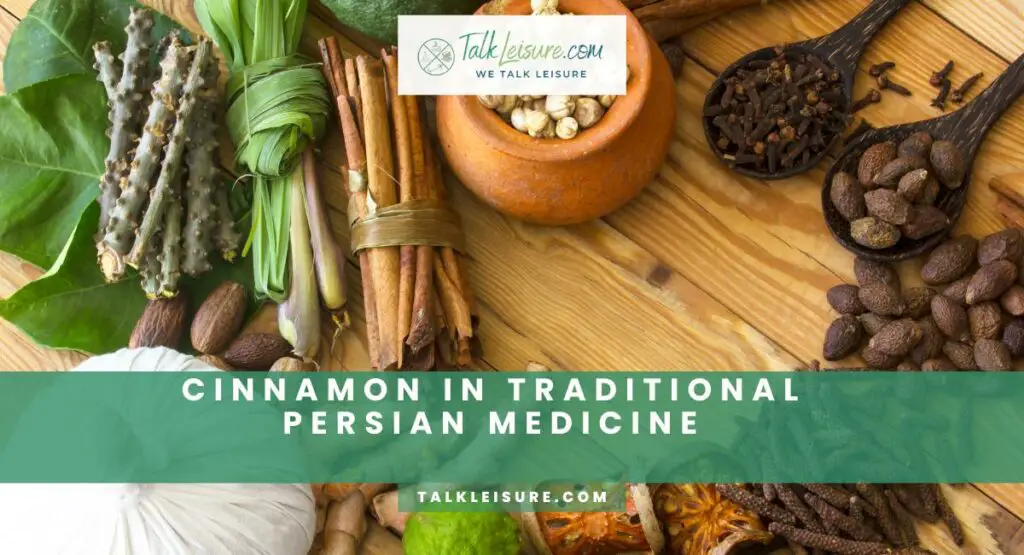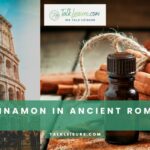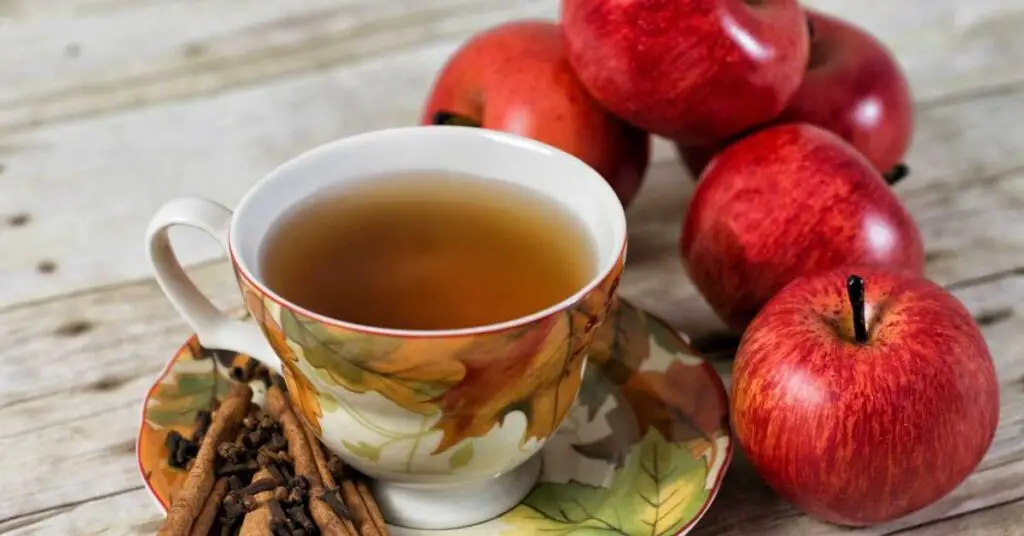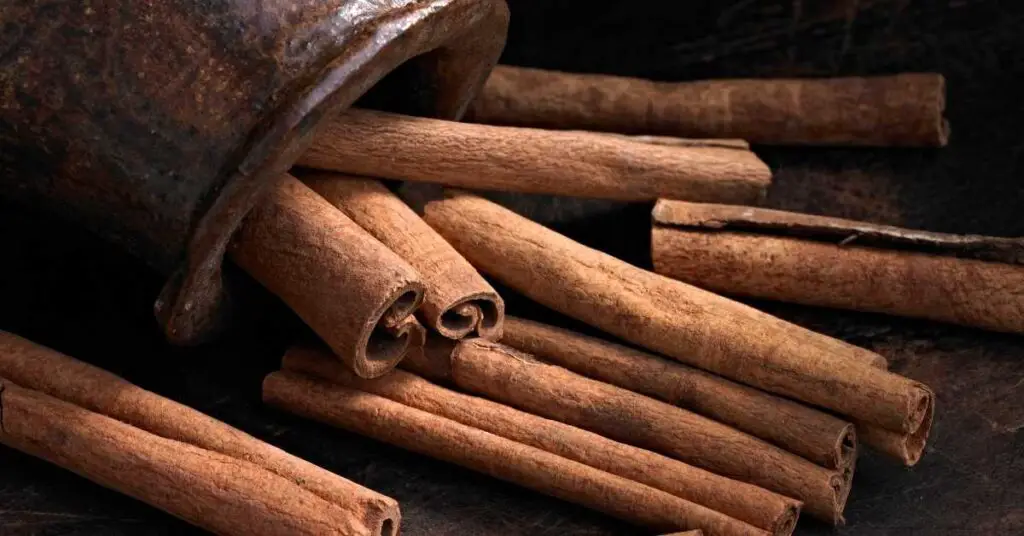In Traditional Persian Medicine, herbs and spices, such as cinnamon, have been used for their therapeutic properties for centuries.
The use of these natural ingredients to treat diseases and improve wellness dates back to ancient times.
This ancient wisdom has been passed down through generations and continues to be utilized in various cultures today.
Cinnamon, in particular, has a long history of traditional use in medicine. Cinnamon has been used to alleviate digestive issues, such as bloating, gas, and diarrhea.
Now its use to treat diabetes, High blood pressure, Parkinson’s, dementia and even Alzheimer’s disease.
Its benefits have been documented in various sources, and it has been included in many traditional remedies.
This spice has also played a role in different cultural cuisines and has been enjoyed for its flavor and health benefits.
In this article, we will explore the historical uses of cinnamon, its importance in Traditional Persian Medicine, and its potential health benefits.
We will also examine how nations mix ingredients in their food based on Traditional Persian Medicine.
What Is Traditional Persian Medicine?
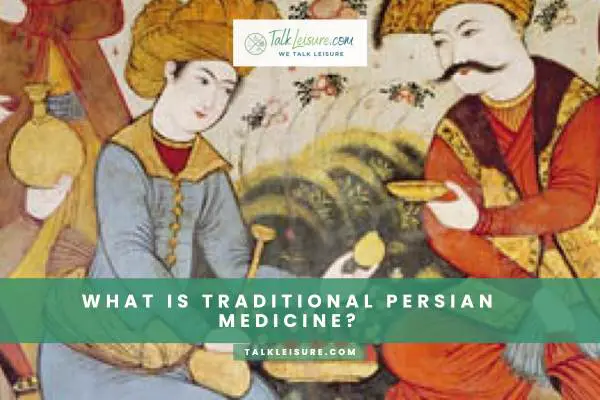
Traditional Persian Medicine, also known as TPM, originated in Iran as an ancient healing system.
It is an extensive medical knowledge system based on a holistic approach to health and wellness.
It combines various disciplines, including Ayurveda, Islamic medicine, and Greek medicine.
TPM covers various aspects of health, including diagnosis, treatment, and prevention, and it focuses on the balance between mind, body, and spirit.
Herbs and spices, like cinnamon, are an essential part of TPM.
They are considered therapeutic agents used in various remedies to cure different diseases.
TPM also emphasizes the importance of a healthy lifestyle, including proper nutrition, exercise, and stress reduction.
It is a comprehensive system that integrates various therapeutic modalities and aims to achieve optimal health and well-being for individuals.
Standpoints Of Traditional Persian Physicians On Geriatric Nutrition
In Traditional Persian Medicine, geriatric nutrition is essential to maintaining optimal health and wellness in older adults.
Traditional Persian physicians emphasized the importance of a balanced diet consisting of fresh fruits, vegetables, and whole grains and recommended limiting the consumption of processed foods and red meat.
They also believed herbs and spices, like cinnamon, could be used as therapeutic agents to support the digestive system and improve overall health.
According to Persian medicine, the key to healthy aging is a balanced and personalized diet based on an individual’s constitution and health requirements.
Traditional Persian Medicine emphasizes the importance of maintaining good health in old age through proper nutrition and an active lifestyle.
By following these principles, older adults can ensure that they enjoy a healthy and fulfilling life.
Theriac In The Persian Traditional Medicine And Cinnamon
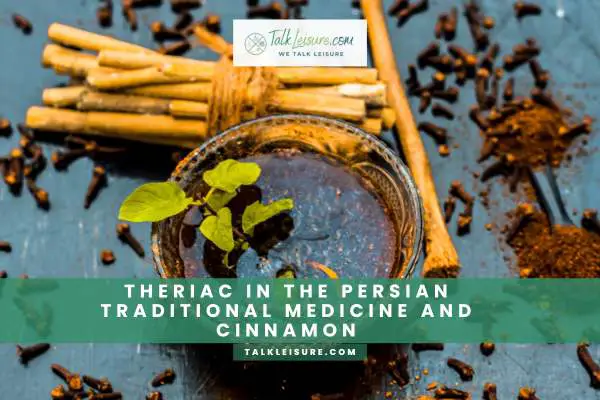
Theriac is a traditional medicine used for centuries in Persian medicine.
It is a complex mixture of herbs, spices, and other ingredients believed to have medicinal properties. Cinnamon, one of the ingredients, was highly valued in traditional Persian medicine for its health benefits.
Cinnamon was believed to be a powerful antioxidant, anti-inflammatory, and antibacterial agent.
It was also used to alleviate digestive issues, like bloating and gas, and to regulate blood sugar levels.
Traditional Persian physicians believed incorporating cinnamon into their patients’ diets could improve health outcomes.
Today, research has shown that cinnamon has numerous health benefits, including reducing inflammation, improving heart health, and regulating blood sugar levels.
Its inclusion in traditional Persian medicine Theriac provides evidence of the long-standing knowledge and wisdom utilized in treating various health issues.
What Diseases Are Treated By Cinnamon In Traditional Persian Medicine?

Traditional Persian medicine has long recognized the health benefits of cinnamon, and it has been used to treat numerous conditions.
Cinnamon has been used to alleviate digestive issues, such as bloating, gas, and diarrhea.
Additionally, it has been used as a natural remedy for respiratory conditions and to boost immunity.
Its potent anti-inflammatory and antioxidant properties have also made it an effective treatment for skin disorders and infections.
Moreover, cinnamon has been recommended to enhance brain function and manage diabetes by regulating blood sugar levels.
Overall, cinnamon is a versatile health-promoting ingredient widely used in traditional Persian medicine to treat a wide range of conditions.
Diabetes And Related Remedies In Medieval Persian Medicine
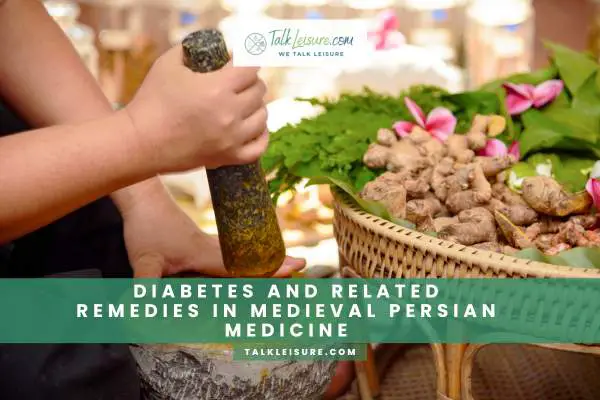
Traditional Persian medicine has a rich and ancient history in treating diabetes.
In medieval times, physicians used various herbs and spices, including cinnamon, to manage diabetes by regulating blood sugar levels.
They also prescribed various lifestyle changes, including diet and exercise, to help manage the disease.
Nowadays, cinnamon is still a popular remedy for diabetes in traditional Persian medicine.
Some studies have shown that consuming cinnamon can improve insulin sensitivity and lower blood sugar levels in people with type 2 diabetes.
Along with cinnamon, herbs and spices such as fenugreek, cumin, and cardamom are commonly used in traditional Persian medicine to manage diabetes.
These remedies testify to the wisdom and efficacy of traditional healing practices that remain relevant today.
History Of Cinnamon
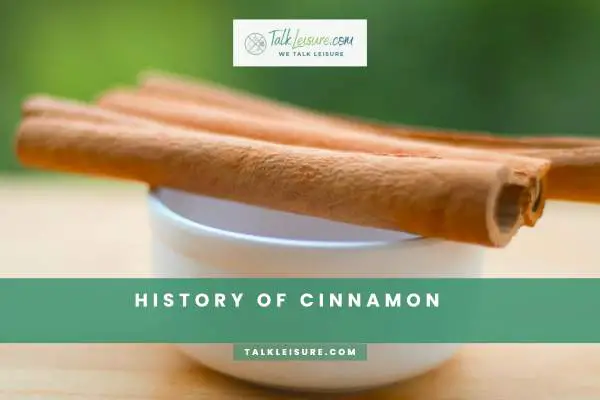
Cinnamon has a rich history and has been used for centuries in various cultures for its medicinal properties.
The ancient Egyptians, for instance, used cinnamon as an embalming agent, while the Greeks and Romans used it to flavor their food and wine.
Cinnamon was a prized commodity in medieval times, and traders risked their lives to bring it from the Middle East to Europe.
Cinnamon originally came from Sri Lanka, where it was harvested from the bark of trees.
It was first mentioned in Chinese writings dating back to 2800 BC.
In traditional Persian medicine, cinnamon was used for various health benefits, including regulating blood sugar levels and treating digestive issues.
Cinnamon is still widely used in different cuisines and is known for its unique, sweet flavor and health-promoting properties.
The Origin of Cinnamon
Cinnamon has been used for thousands of years for its medicinal and culinary benefits, but where did it all start?
The answer lies in Sri Lanka, where cinnamon trees grow in abundance. Cinnamon is originally native to Sri Lanka and neighboring countries like the Malabar Coast in India and Myanmar (Burma).
People in these areas have been growing it for a long time. You can also find cinnamon grown in South America and the West Indies.
The bark of these trees is harvested and dried to create the cinnamon sticks we know today. In ancient times, cinnamon was considered a luxury item and was traded across vast distances.
Chinese texts dating back to 2800 BC mention cinnamon and its many uses, including as a cooking spice and medicine.
Today, cinnamon is a staple ingredient in many dishes and is praised for its unique flavor and potential health benefits.
It’s fascinating to think about how this simple spice has traveled worldwide and played a significant role in so many cultures.
Cinnamon In Traditional Medicine
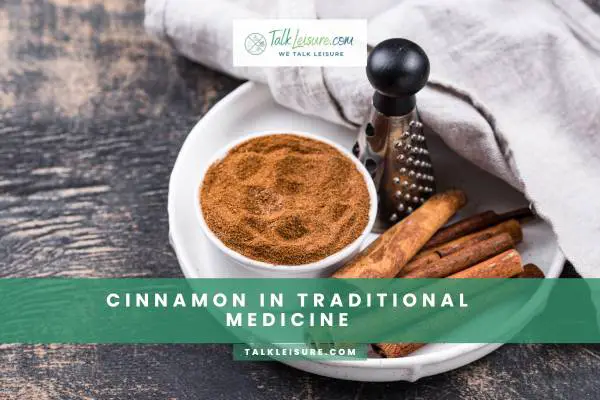
Cinnamon has been a staple ingredient in traditional medicine for centuries.
In ancient Persian medicine, cinnamon was recommended for various health conditions, including digestive issues, respiratory ailments, and menstrual pain.
Modern scientific research has validated its traditional use, and cinnamon has become a popular supplement for managing blood sugar levels and reducing the risk of heart disease.
Incorporating cinnamon into your diet adds a sweet and aromatic flavor to your food and provides potential health benefits backed by ancient wisdom.
What Was The Ancient Use Of Cinnamon?

Cinnamon has been used in traditional medicine for centuries, with its roots traced back to Ancient Persia.
It was believed to have therapeutic properties that help treat various health conditions such as digestive issues, respiratory ailments, and menstrual pain.
Ancient Egyptians used it for embalming and believed it had healing powers to cure diseases of the body and soul.
The Chinese also recognized cinnamon’s warming properties and used it to balance the body’s natural temperature.
Since then, cinnamon has been widely used and is a popular spice in modern medicine and cooking.
What Was The Traditional Use Of Cinnamon?
Cinnamon has been used for medicinal purposes for centuries in various cultures, with its roots traced back to ancient Persia.
Traditional Persian Medicine recognizes cinnamon for its therapeutic properties that help treat different health conditions such as digestive issues, respiratory ailments, and menstrual pain.
The Chinese also recognized cinnamon’s warming properties and used it to balance the body’s natural temperature.
In the Bible, cinnamon was considered a precious and sacred spice used for anointing and healing purposes.
Today, cinnamon continues to be used in modern medicine and cooking, making it a versatile ingredient that has stood the test of time.
What Is The Use Of Cinnamon In Medicine?
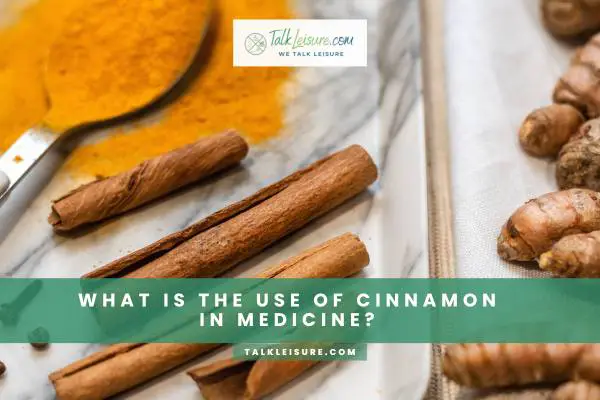
Cinnamon has been a staple of traditional medicine for thousands of years across many cultures.
It is abundant in antioxidants, anti-inflammatory, and antimicrobial compounds that aid in treating a wide range of health conditions.
Recent studies have shown that cinnamon can help control blood sugar and lower cholesterol levels in people with type 2 diabetes.
The spice contains cinnamaldehyde, which aids in reducing inflammation in the body, making it a potent anti-inflammatory agent.
Additionally, studies have shown that cinnamon possesses anti-cancer properties that could help prevent the growth and spread of cancer cells.
Cinnamon continues to be a vital ingredient in medicine and a powerful tool in the fight against numerous health conditions.
How Does Cinnamon Ayurvedic Food Improve Wellness?
Cinnamon is a powerhouse regarding its benefits for the body and mind, particularly in traditional Ayurvedic medicine.
This spice contains antioxidants, anti-inflammatory, and antimicrobial compounds that can aid in treating a wide range of health conditions.
In Ayurvedic medicine, cinnamon enhances digestion, manages blood sugar levels, lowers cholesterol, and reduces inflammation.
It is also considered a warming spice, stimulating circulation and promoting respiratory health.
Cinnamon can also be used topically to relieve pain and soreness in muscles and joints.
Incorporating cinnamon into your diet and daily routine may increase overall wellness and a healthier lifestyle.
As with any natural remedy, consult a healthcare professional before significantly changing your diet or health routine.
Historical Uses Of Herbs And Spices In Different Cultures.
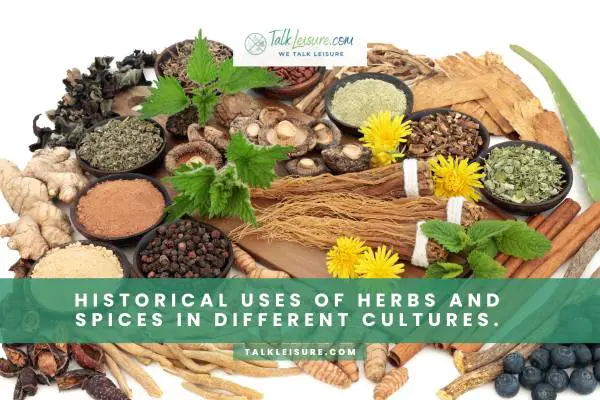
The use of herbs and spices dates back to ancient times, when they were used to treat and prevent various health conditions.
The Greeks, Romans, and Egyptians used herbs such as mint, coriander, and thyme in their cooking and for medicinal purposes.
Similarly, Ayurvedic medicine utilizes spices like turmeric, ginger, and black pepper to promote wellness.
In Chinese medicine, herbs like ginseng and licorice root were used to improve the immune system and reduce inflammation.
These traditional remedies continue to influence modern food and medicine practices.
Today, herbs like rosemary and sage are known for their antioxidant properties, while turmeric is used to alleviate arthritis and digestive issues.
Understanding herbs and spices’ historical uses and cultural significance can provide insight into their unique properties and how they can benefit our health and well-being.
How Nations Mix Ingredients In Their Food Based On Traditional Persian Medicine.
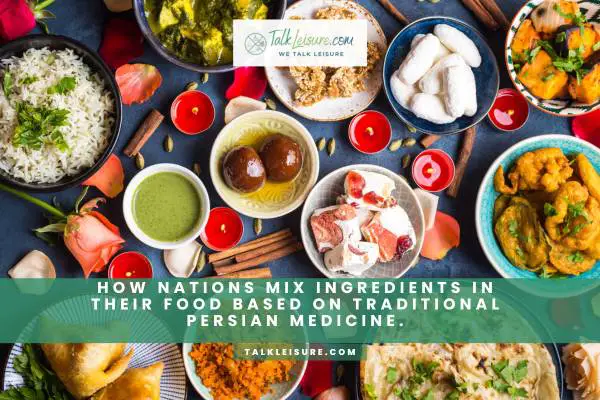
Traditional Persian medicine has influenced various countries’ culinary traditions for centuries.
The medicinal properties of herbs and spices have been incorporated into foods to create tasty, healthy, and nutritious meals.
In Iran, for example, turmeric, saffron, and rosewater are commonly used, while in Afghanistan, cloves, cumin, and ginger are popular additions. Other nations, like India, Pakistan, and Azerbaijan, have unique combinations.
The principles of traditional Persian medicine center on balance and harmony.
Ingredients are combined in specific ways to target different health concerns and promote well-being.
For example, cinnamon, a popular spice used in Tashkent, Uzbekistan, is believed to aid digestion and reduce inflammation.
Similarly, ginger, used extensively in Chinese medicine, has been shown to relieve nausea and improve digestion.
Overall, using traditional Persian medicine in cooking demonstrates how ancient practices can continue to enrich our lives in the modern-day.
Final Thoughts
Cinnamon has been an integral part of traditional Persian medicine for centuries, and its culinary and medicinal benefits have been appreciated worldwide.
The spice’s warming properties make it a popular addition to soups, tea, and desserts during cold winter.
Cinnamon’s anti-inflammatory and anti-microbial properties have also made it a valuable medicinal herb in traditional Persian medicine.
It has been used to treat various conditions, including digestive disorders, respiratory problems, and skin issues.
Beyond its culinary and medicinal benefits, cinnamon’s aroma and taste have made it a beloved spice in Persian culture.
Its use in various dishes and sweets has become a symbol of hospitality and festivity.
Overall, the continued use of cinnamon in traditional Persian medicine and cuisine highlights the importance of ancient wisdom in modern-day practices.
FAQ
How Sri Lankan Cinnamon Invaded Mexican Cuisine?
Sri Lankan cinnamon has long been a traditional Persian medicine and cuisine staple.
However, its popularity has gone beyond borders. In recent years, it has made its way to Mexican cuisine, adding a warm and sweet aroma to dishes such as mole sauce, hot chocolate, and rice pudding.
The spice’s versatility has allowed it to seamlessly blend with various Mexican ingredients, creating a unique and flavorful experience for food lovers worldwide.
Sri Lankan cinnamon’s journey to Mexico is attributed to the Spanish colonizers, who were introduced to the spice during their conquests.
The Spanish quickly recognized its value and returned it to their homeland, where it became a popular ingredient in Spanish cuisine.
Over time, the spice found its way to the New World, where it has now become an essential spice in Mexican cooking.
Did Ancient Egyptians Have Cinnamon?
Cinnamon has been used for centuries in traditional medicine and cooking across various cultures.
While there is no conclusive evidence, some studies suggest that Egyptians knew and used cinnamon as early as 2000 BCE.
It was likely imported from Southeast Asia, a significant cinnamon source at the time.
Egyptians used it for medicinal purposes, such as its anti-inflammatory and antiseptic properties.
It was also used as a flavoring in food and drink and even in the embalming process.
With its long history of use, it’s clear that cinnamon has been an essential part of human cultural heritage for millennia.
What Was Cinnamon Used For In Bible Times?
Cinnamon has been valued for its medicinal and aromatic properties for thousands of years, and it is even mentioned several times in the Bible.
In biblical times, cinnamon was highly prized and often used in embalming rituals to symbolize purity.
It was also used as an anointing oil and a cooking spice. In addition to its fragrance and flavor, cinnamon was believed to have healing powers, especially as a digestive aid and to fight off infections.
Interestingly, the ancient Egyptians also used cinnamon for similar purposes, which shows that this spice has been essential in traditional medicine across different cultures for centuries.
Today, cinnamon remains a popular spice in cooking and is also widely used in natural remedies.
What Civilization Used Cinnamon Regularly?
Cinnamon has been a valuable spice in traditional medicine for centuries, and its use can be traced back to the ancient Egyptians.
However, the Persians embraced the use of cinnamon regularly in their medicinal practices, and it became a staple of Persian medicine.
Persians used cinnamon for its anti-inflammatory, anti-bacterial, and digestive benefits, among other things.
They also used it to help regulate blood sugar levels and to treat respiratory ailments.
Later on, the Greeks and Romans also explored the medicinal properties of cinnamon and used it for its healing properties.
Best Wishes!

